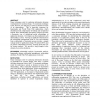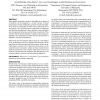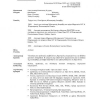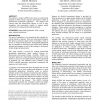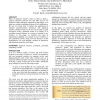HT
2000
ACM
14 years 5 months ago
2000
ACM
Many techniques exist for analyzing information domains in preparation for systems design. No systematic technique exists, however, for analyzing a system or domain in terms of it...
HT
2000
ACM
14 years 5 months ago
2000
ACM
Hypermedia structured in terms of the higher-level intent of its author can be adapted to a wider variety of final presentations. Many multimedia systems encode such highlevel int...
HT
2000
ACM
14 years 5 months ago
2000
ACM
HT
2000
ACM
14 years 5 months ago
2000
ACM
We propose a method (APHID) that assists an instructional designer to define format, structure and sequence within an instructional hypermedia application. Our method uses concept...
HT
2000
ACM
14 years 5 months ago
2000
ACM
Authoring hypertext structures has always been a difficult task. The cognitive overhead problem, well known from authors when creating structured hyperdocuments, has been tackled ...
HT
2000
ACM
14 years 5 months ago
2000
ACM
Software components for distance and just-in-time (JIT) learning are an increasingly common method of encouraging reuse and facilitating the development process[58], but no analog...
HT
2000
ACM
14 years 5 months ago
2000
ACM
As dynamically linked content follows the progression of statically linked media into the realm of video, new opportunities for link creation become apparent. In this paper we des...
HT
2000
ACM
14 years 5 months ago
2000
ACM
This paper discusses hypermedia aspects of the design of a Virtual Project Room. Based on ethnographic and participatory design studies of landscape architects’ and architects&#...
HT
2000
ACM
14 years 5 months ago
2000
ACM
Clustering separates unrelated documents and groups related documents, and is useful for discrimination, disambiguation, summarization, organization, and navigation of unstructure...
HT
2000
ACM
14 years 5 months ago
2000
ACM
Much of hypertext narrative relies on links to shape a reader’s interaction with the text. But links may be too limited to express ambiguity, imprecision, and entropy, or to adm...
